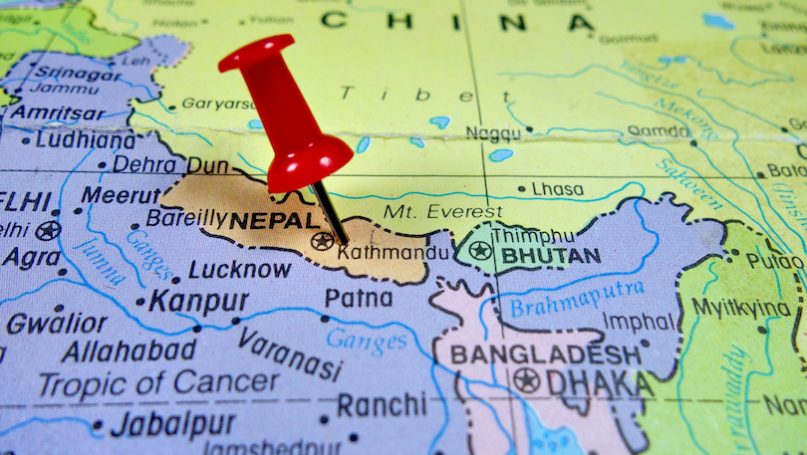Bibek Chand

Buffer states have been important in geopolitical thought as they are usually smaller states situated between two (or more) larger contending powers. These buffer states, along with their contending neighbors, are collectively called buffer systems. Such buffer systems offer opportunities to decipher regional dynamics of interactions. Historically, buffer states were used as geographic discontinuities to prevent direct contact between rival powers. In some cases, such states served as early warning systems for the core of empires, signaling invasions and giving the core time to react to them. For example, the Roman Empire created march states using what they termed barbarian tribes on their periphery to cushion threats from the outside.
Thus, the historical concepts of the buffer state emphasized its static geographic importance for its more powerful neighbors, whether as discontinuities between contending great powers or as early warning systems against invading forces. However, with advances in communication and transportation technologies since the early 20th century, geography (while still important) does not offer the same spatial protections as it did previously. Thus, the buffer state concept needed a reworking to better grasp its importance in contemporary International Relations.
In Reframing the Buffer State in Contemporary International Relations: Nepal’s Relations with India and China, I make the argument for recasting the buffer state concept which is more suitable as an analytical tool in contemporary International Relations. I argue that the buffer state needs to be understood as a dynamic political space wherein its agency is important in order to fully comprehend its role in international politics. However, the buffer state’s importance to its neighbors needs to be included in its assessment as its primary function is tied to the strategic value its contending neighbors attest to it.
In the book, I propose a new conceptual framework for the study of buffer states rooted in two factors: strategic utility of the buffer state for the contending neighboring states and the agency of the buffer state. This concept offers a new lens of assessing the buffer state that is not just tied to the strongly static notion of the buffer as a “gap” or “space” between contending powers. Instead, it acknowledges that buffer states are strategically important for its contending contiguous neighbors; they are not just spectators, but rather dynamic players in the buffer system. The new buffer state concept accords it the notion of a dynamic political space wherein contending powers separated by it actively showcase competitive overtures. Such overtures may offer these contending states the means to assess the extent of their influence within the buffer state.
In a context characterized by reduced utility of buffer states as geographic discontinuities or early warning systems, this new buffer state concept not only highlights such states as dynamic spaces to measure the foreign policy approaches of their contending neighbors but, also incorporates the actions taken by the buffer state to highlight its agency.
The case used to illustrate this new buffer state concept is Nepal. It is a smaller state located between two contending powers, China and India. These two states have boundary disputes and a longstanding strategic competition including a brief border war in 1962. The Himalayan Mountains served as natural barriers between the two powers and given Nepal’s geopolitical location in the central Himalayas, historically, it served the role of a buffer state between the British Empire in India and the Qing Empire in China. In the modern context, Nepal continues to be of strategic importance given the continued tensions in the Sino-Indian borderlands. Thus, the case of Nepal is used to discuss the new buffer state concept due to its relevance in Sino-Indian interactions and the growing influence of China in South Asia, which is a region traditionally considered to be within India’s sphere of influence. The domestic political context in Nepal, which also determines the country’s relations with its neighbors and offers insight in its dynamic relations with them, also made the case pertinent for this new buffer state concept.
To extrapolate the new concept of the buffer state, I used 21 specific political events (called critical junctures) tied to the China–India–Nepal buffer system. These critical junctures are those political events in the buffer system that provoked action from any of its constituent states. The assessment of these 21 critical junctures showcase that the buffer system is characterized by competitive overtures from India and China in Nepal; however, they are also actively seeking to undermine each other within the buffer state while concurrently, the buffer state uses its agency to pursue its own interests. The buffer state, Nepal, actively responded to the overtures from India and China, jockeying for support to maximize its own interests. This new buffer state concept that emphasizes its strategic utility for its neighbors and agency offers a more comprehensive understanding of regional dynamics of security. The book also offers detailed analysis of Sino-Indian interests in Nepal and the latter’s reactions to pursue its own interests as a much weaker state than its neighbors.
As the war rages in Ukraine, there are renewed discussions on buffer zones and buffer states in Europe’s eastern frontiers with Russia. As Ukraine has showcased, its agency in international politics did matter and lends to the buffer state concept I extrapolate in the book. Perhaps it is time again to significantly re-situate buffer states back again in International Relations.
No comments:
Post a Comment